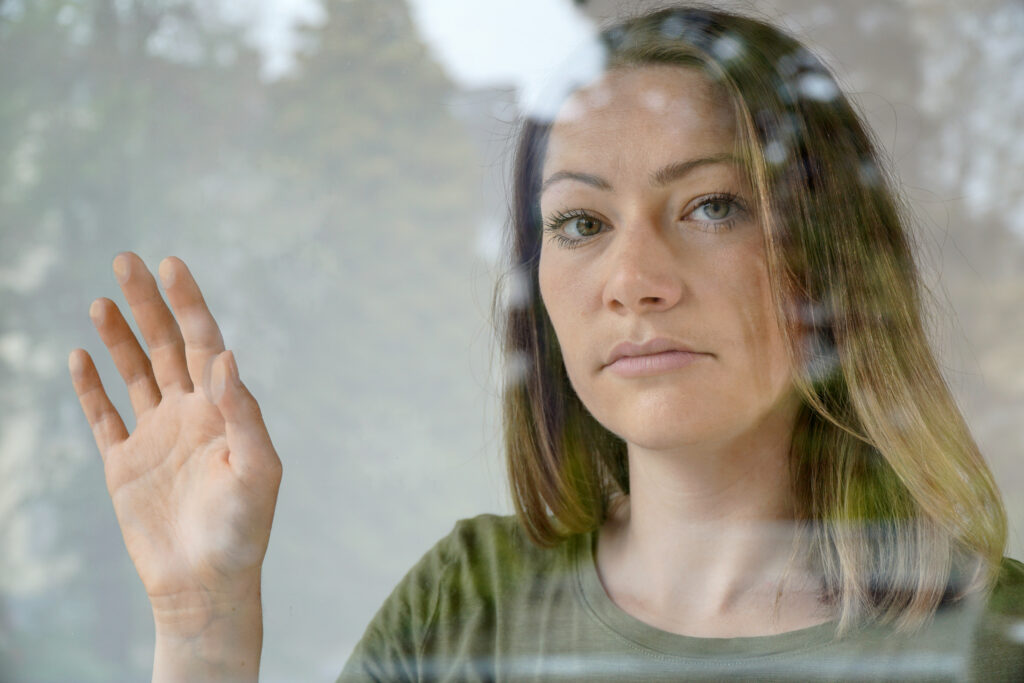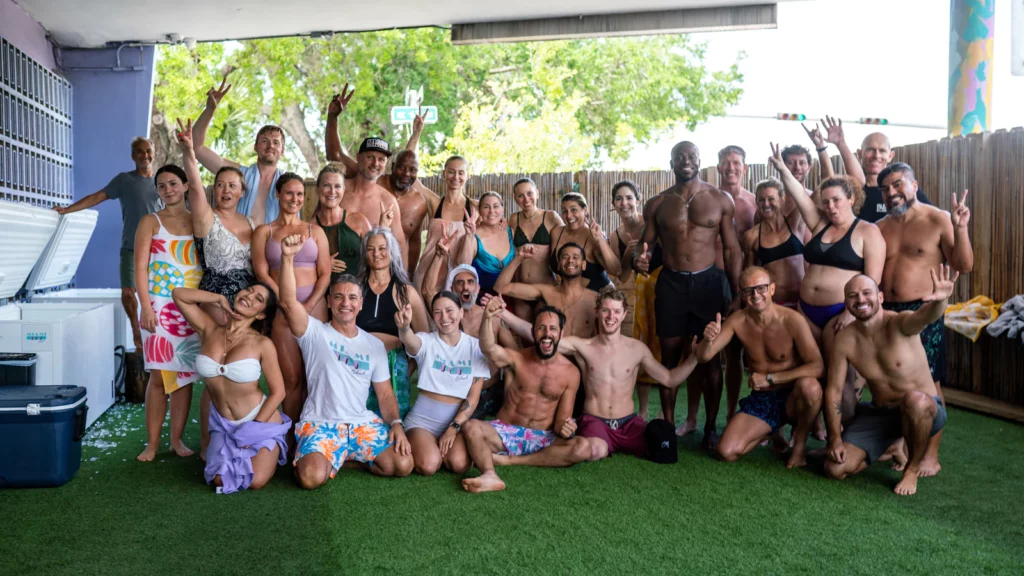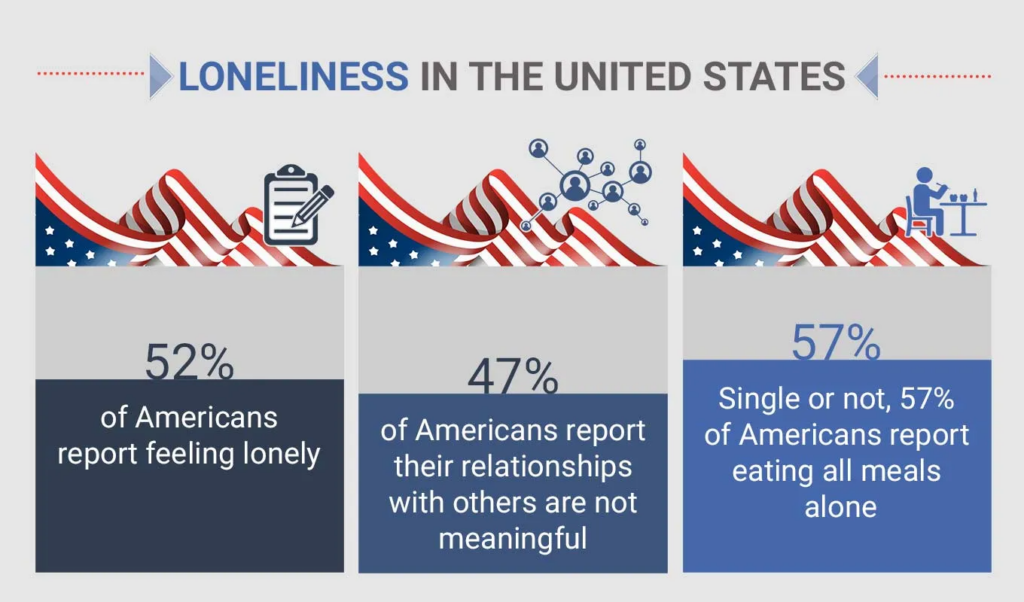Cracking the Loneliness Code: America’s Silent Epidemic

Reed Berglund is a passionate advocate for wellness and an…
How do you perceive the concept of social connection? Is it about meeting new people, spending time with friends, or perhaps joining clubs and communities? What if I told you that social connection held the key to enhancing your health, reducing the risk of anxiety, depression, heart disease, and even dementia? This year, the U.S. Surgeon General released a report that shed light on the growing loneliness epidemic in the United States. This advisory, titled “The Healing Effects of Social Connection,” underscores the vital role connection plays in individual, community, and societal well-being and provides a framework for us all to contribute to its improvement.
At Breathe, social connection is the core of our mission, and it’s research like this that has driven us for years, long before the pandemic. Our recent collaboration with Alpaca Ventures during Art Basel offered a day of social connecting amid the whirlwind of events. We provided a haven at Reserve Padel where guests could step away from the chaos, delve into the topic of loneliness, explore wellness tech designed to enhance our well-being, and, most importantly, discover the hottest new social game – padel. In this article, we will delve into the root causes of this loneliness epidemic and explore actionable steps to combat it.
The Loneliness Paradox: Unraveling the Roots of Isolation

Dr. Vivek H. Murthy assumed the role of Surgeon General in 2014, initially not considering loneliness as a significant public health concern. However, his perspective changed when he embarked on a nationwide listening tour. During this journey, he encountered stories from fellow Americans that were eye-opening. People began to express feelings of isolation, invisibility, and insignificance.
Even when they couldn’t quite articulate the term “lonely,” individuals from diverse backgrounds and across all ages shared sentiments like, “I’m carrying life’s burdens all alone,” or “if I were to vanish tomorrow, nobody would even notice.” It became abundantly clear that social disconnection was more prevalent than anyone had realized. This perception was supported by data indicating that approximately one in two adults in America reported experiencing loneliness in recent years. That was before the COVID-19 pandemic further isolated us from our friends, loved ones, and support systems, intensifying feelings of loneliness and isolation.
Why Social Connection Matters
In an increasingly interconnected world, it’s easy to forget that at our core, humans are inherently social beings. We crave interactions, and our well-being hinges on the strength of our social connections. Barbara Gutierrez, Associate Director of Communications and Public Relations at the University of Miami, shed light on this topic in a recent article, citing research that underscores the significance of our social bonds.

She poignantly noted that “solitary confinement in prison is the harshest punishment that can be given to an inmate since it deprives them of the company of others and forces them to be alone for extended periods.” Alarmingly, a similar isolation is playing out in America, even without the confines of a prison sentence.
Our relationships with family, friends, colleagues, and neighbors are the building blocks of social connection. Furthermore, our sense of community is shaped by our neighborhoods, digital environments, schools, and workplaces. As highlighted in the Surgeon General’s advisory, “Social connection—the structure, function, and quality of our relationships with others—is a critical and underappreciated contributor to individual and population health, community safety, resilience, and prosperity.” However, a concerning number of Americans lack social connection in one or more ways, jeopardizing the myriad benefits it brings and leading to adverse health outcomes.
Tiffany Field, a research professor at the Mailman Center for Child Development at the University of Miami Miller School of Medicine, has delved into this topic extensively. She suggests that the loneliness epidemic can be partly attributed to excessive social media use, emphasizing that virtual interactions on cell phones or computers can’t truly replace the richness of physical social connections. Field’s research also highlights the scarcity of touch in our modern lives, a fundamental aspect of human interaction that offers numerous health benefits.
In a pre-COVID-19 study, she observed people waiting at airport gates, finding that they spent a staggering 76 percent of their time engrossed in their phones but engaged in physical touch interactions only 4 percent of the time, even when traveling together, as families, or as couples. “Simply put, everyone needs a daily dose of something that moves the skin to stimulate these receptors,” Dr. Field said. “We live in an era where Americans are touch-deprived, receiving fewer hugs, massages and physical affection compared to other countries.”
What is Social Connection?
Back in 1938, a groundbreaking study by Harvard researchers set out on a quest to uncover the secret to a happy life. They meticulously collected health records from 724 participants hailing from diverse corners of the globe, regularly peppering them with detailed inquiries about their lives over two-year intervals. Surprisingly, the answer wasn’t found in career accomplishments, financial success, exercise routines, or even dietary choices. Instead, the most consistent and enduring revelation, gleaned from 85 years of research, has been this: Positive relationships are the linchpin of our happiness, health, and longevity.
At the heart of a fulfilling life lies the concept of “social fitness.” Relationships, it turns out, have a tangible impact on our physical well-being. Consider the exhilaration of feeling truly understood during an engaging conversation or the sleepless nights during turbulent romantic times. These are all testament to the profound influence of our relationships on our overall health.
Maintaining healthy and balanced relationships requires an ongoing practice of “social fitness.” Contrary to the assumption that once established, relationships will take care of themselves, our social lives are dynamic living systems that need regular exercise.
At Breathe, we witness this phenomenon unfold in every city, hundreds of times a month. Whether it’s a pottery class, a roller skating festival, learning a new sport like padel, or a meditation gathering, attendees consistently experience an energizing exchange of energy among themselves. They connect on levels previously unexplored, reaffirming the profound impact of social connection on our well-being.

According to the Surgeon General, social connection encompasses a wide range of interactions, relationships, roles, and the sense of connection that individuals, communities, or society may experience. An individual’s level of social connection isn’t solely determined by the number of close relationships they have; it encompasses the broader aspects of structure, function, and quality. These vital components of social connection encompass:
- Structure: The number and variety of relationships (e.g., co-workers, friends, family, neighbors) and the frequency of interactions with others.
- Function: The degree to which others can be relied upon for various needs.
- Quality: The degree to which relationships and interactions with others are positive, helpful, or satisfying versus negative, unhelpful, or unsatisfying.
Each of these components plays a significant role in our health and well-being, influencing different aspects of our lives in unique ways.
What Is Fueling the Trend of Loneliness Epidemic?
In the early 1970s, polls revealed that approximately 45% of Americans felt they could reliably trust other Americans. However, by 2016, this figure had dwindled to a mere 30%. Social networks have been shrinking, and levels of social participation are declining, irrespective of whether individuals explicitly report feeling lonely.
Loneliness Epidemic by the Numbers

People are spending more time in solitude, adding an extra 24 hours of alone time each month since 2003. In-person social interactions, particularly among young adults, have taken a hit.
Close friendships are becoming scarce, with nearly half of Americans reporting having three or fewer close friends in 2021. The rise of single-person households, doubling since 1960 to 29%, is reshaping our social fabric.
Even our connection to local communities is weakening, as only 16% of Americans felt strongly attached in 2018. The documentary “Blue Zones” by Dan Buettner has underscored the importance of community. These shifts are contributing to the loneliness challenge, emphasizing the urgency of raising awareness and taking action.
The Power of Social Connection: Key Strategies
Scientific evidence strongly reinforces the idea that socially connected individuals enjoy longer and healthier lives. Extensive population studies e.g. Blue Zones have consistently shown that people with robust social connections tend to live longer, while those facing social deficits like isolation, loneliness, or poor-quality relationships are at a higher risk of premature mortality, regardless of the cause. To put it into perspective:
“Lacking social connection is like smoking 15 cigarettes a day”
Advisory: The Healing Effects of Social Connection
In light of these findings, the Surgeon General has outlined key pillars to strengthen social connection:
- Strengthen Social Infrastructure in Local Communities: Environmental factors significantly influence social connection. Decisions regarding city layout, public transportation accessibility, housing design, and green spaces directly impact community social interaction. Initiatives like the one in Miami, where CrossFit HQ, Miami Mayor Francis Suarez, Games athlete Noah Ohlsen, and Rogue Fitness are working together to bring fitness opportunities to all age groups and backgrounds, exemplify efforts to enhance local social infrastructure.
- Enact Pro-Connection Public Policies: Encouraging policies that foster social connection is essential. These policies should promote community engagement, reduce isolation, and prioritize social well-being.
- Mobilize the Health Sector: Social connection plays a pivotal role in health, serving as an independent protective factor. Conversely, social isolation and loneliness epidemic are independent risk factors for various major health conditions, including cardiovascular disease, dementia, depression, and premature mortality. The health sector, including healthcare delivery systems and public health organizations, plays a critical role in addressing social connection and reducing its adverse health impacts.
- Reform Digital Environments: Technology has transformed our lives in many positive ways but also comes with downsides. It can sometimes distract us, negatively affect our self-esteem and relationships, and hinder deep interpersonal connections. Addressing these challenges requires reforming digital environments to promote healthier online interactions and mitigate the negative social impacts of technology.
- Close the Knowledge Gap: It’s crucial to establish a research agenda aimed at addressing gaps in the evidence base regarding social connection. Funding research at an appropriate level of investment is necessary to tackle this pressing issue effectively. Additionally, coordination among research efforts is vital.
- Cultivate a Culture of Connection: Beyond formal programs and policies, the everyday practices and cultural norms of society significantly influence social connection. Fostering a culture of connection in how we engage with one another can be transformative in promoting social well-being and tackling the loneliness epidemic.
Conclusion: Embracing Connection for a Brighter Future
In a world where the threads of social connection have frayed, we find ourselves at a pivotal moment. The evidence is clear: our health, happiness, and even our very survival hinge on the strength of our social bonds. It’s time to recognize the urgency of this challenge and take action to rebuild the fabric of our communities.
Each week, we gather members of the vibrant Miami community to embark on a journey of connection. From immersive city guides to unforgettable dinner series and larger events designed to move the body, uplift the soul, and nourish the mind, our mission is clear: to reignite the spark of social connection. Because we believe that the path to a brighter, healthier future lies in our ability to come together.
We invite you to join us on this journey. Sign up for our newsletter to stay updated on the latest experiences that await you. It’s time to make a change, one connection at a time. Let’s build a future where loneliness has no place, and where social connection is the thread that weaves our communities together. Together, we can make it happen.
Reed Berglund is a passionate advocate for wellness and an embodiment of the active lifestyle. As a former college athlete who played basketball for the UNLV Running Rebels, he's lived a life deeply immersed in body movement and sports. Reed's enthusiasm for staying active extends far beyond the basketball court. He's an avid surfer, wakeboarder, skier, basketball and tennis enthusiast, and an emerging padel player. His love for holistic well-being also includes a dedication to cold plunges and contrast therapy, embracing these practices to optimize recovery and vitality. In his role as the founder of Breathe, Reed brings his extensive experience in wellness and his unwavering commitment to helping individuals discover their path to a healthier, more mindful life. His personal journey and multifaceted fitness background inspire his vision for Breathe as a platform that empowers urban dwellers to explore, experience, and embrace well-being in all its forms. Reed's current focus lies in the realm of flexibility, a key component in his fitness journey to extend the longevity of his active lifestyle. Through Breathe, he aims to share his passion, knowledge, and insights with a vibrant community of wellness enthusiasts, experts, and storytellers, collectively working toward a healthier and happier world.


